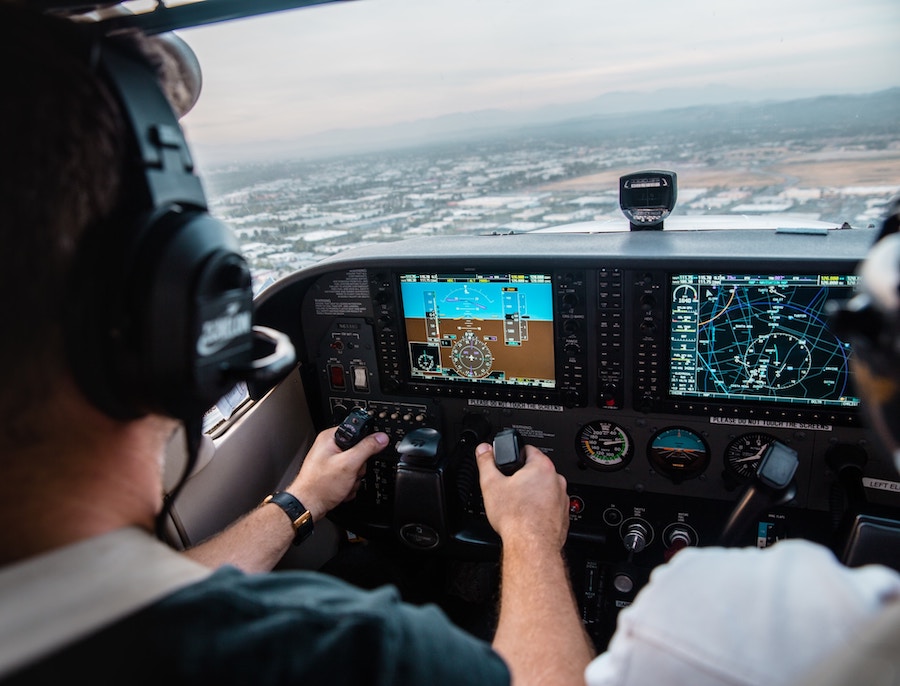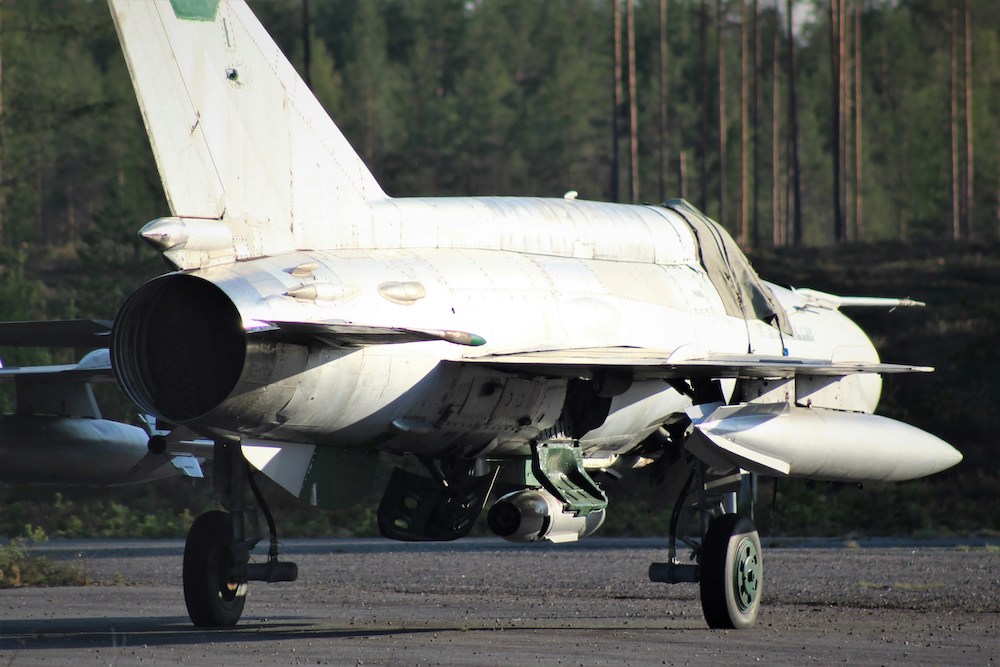
Advancements in technology have come a long way from the steam gauge era. Today, the more complex the aircraft is, the more advanced the air data computer (ADC) obtaining the inputs, displaying the outputs, and managing the air data on the aircraft. This advancement made it possible to transition from the conventional analog instruments (i.e., steam gauges) as the primary source of air data, to the new digital instruments (i.e., glass cockpit).
An air data computer is the avionics component of an aircraft designed to manage information such as position, attitude, altitude, and speed for the flight displays and any other systems requiring the data (i.e., flight management computers (FMCs), flight controls, engine controls, etc.) Other information, such as angle-of-attack, total air temperature, and static air temperature, can also be displayed, depending on the complexity of the system.
An air data computer of a simpler aircraft may have fewer components, less complex output interfaces, and may not require any pilot input. In this case, the computer often independently feeds present air data, such as true airspeed, pressure altitude, and outside air temperature, directly to its output interfaces (i.e., display systems, autopilot system, etc.) Meanwhile, a more complex aircraft may have multiple air data computers that are integrated with other computers and units throughout the aircraft to calculate key air data parameters and display them in a glass cockpit.
Out With the Old . . .
In the conventional analog instrument phase, sensors throughout the aircraft would send signals to the relevant instruments either by means of:
- Pneumatic lines that transmit the pressure directly (i.e., pitot tube, static port) or
- Electrical connections (i.e., total air temperature probe, angle of attack probe).
In this type of system, each instrument was independent and, therefore, isolated from the rest of the instruments. This implied that based on the information provided by each instrument, the flight crew must have manually calculated other data, such as true airspeed or static air temperature.
Apart from this, each instrument had its own gears, capsules, and other moving parts, which resulted in a more complex system that led to errors and inaccuracies due to mechanical imperfections, friction, delay, etc. This again implied the flight crew must have manually applied the necessary corrections published in the aircraft manual for the affected instruments. This resulted in an increased workload for the flight crew and restrictions on operating in certain airspace (i.e., Reduced Vertical Separation Minimum (RVSM) airspace) or performing more procedures that required a high level of accuracy.
. . . In With the New
Now, taking the above-mentioned limitations and disadvantages of the conventional analog instruments under consideration, the air data computer was developed.
An air data computer is a unit that receives and processes information from sensors to calculate different parameters and sends this information to relevant instruments electronically.
This logic has several advantages and addresses the shortcomings of conventional analog instruments in the following ways:
- The electronic signals sent by the air data computer replace the need for pneumatic lines and capsules, errors due to delay, and mechanical imperfections of conventional analog instruments.
- The air data computer can store in its memory the position errors of the sensors under different flight conditions to correct the measurements automatically in real-time. This substantially increases the accuracy and integrity of information and reduces flight crew workload, thus allowing flight crews to operate safely in RVSM airspace.
- The built-in test equipment of the air data computer regularly monitors and tests the integrity of the unit’s data processing, thus ensuring the indication of the instruments is correct and accurate at all times.
How Air Data Computers Work – Inputs
Simple units
Most smaller aircraft have simpler air data computer units installed with inputs received from the:
- Pitot tube
- Static port
- Temperature probe
- Angle of attack probe
Figure 1 Simple air data computer inputs
Total and static pressure information from the pitot tube and static port sensors is converted to an electronic signal by the pressure transducers, which is then sent to the microprocessor and memory of the air data computer.
The total air temperature probe and angle of attack probes already have transducers in the sensors and send information directory to the processor. After receiving the raw data in the form of electronic signals, the unit integrates and processes to calculate the different parameters.
Complex units
More complex aircrafts use the Air Data Inertial Reference System (ADIRS) to manage their air data. The major components of the ADIRS include:
- Air data inertial reference units (ADIRUs), which are the equivalent of an air data computer on a simpler aircraft
- Air data modules (ADMs)
- An inertial system display unit (ISDU)
- A dual mode select unit (MSU)
- Static ports
- Pitot probes
- Alpha vanes
- A total air temperature probe
Figure 2 B737 ADIRS inputs
The ADIRUs are the equivalent of an air data computer on a simpler aircraft. They provide internal position and tract data to the FMCs, as well as attitude, altitude, and airspeed data to the displays. The ADIRUs process information from:
- Internal gyros and accelerometers
- Air data module inputs
- Alpha vanes
- Other systems
How Air Data Computers Work – Outputs
Simple units
The information received from the sensors by simpler air data computers is raw, so the task of the unit is to integrate and process this data. Once the information is processed, the air data computer uses formulas stored in its memory to calculate all the parameters derived from this data. Normally, this data includes the:
- Barometric altitude
- Vertical speed
- Indicated airspeed
- Static air temperature
- True airspeed
- MACH number
- Angle of attack
These resulting parameters are calculated electronically by the micro processer, which facilitates integration into different types of instruments in the flight deck. This data can be sent to analog instruments that are adapted to receiving electronic inputs (i.e., airspeed indicator, altimeter, vertical speed indicator, machmeter, AOA indicator, temperature indicator, etc.) or electronic instrument systems with digital presentations.
Figure 3 Simpler air data computer outputs
The information processed by the air data computer can also be sent to other systems that require such data (i.e., the autopilot, flight directors, the transponder, ADS-B, monitoring and warning systems, the flight management system, the flight data recorder, ACARS, etc.)
Complex units
On more complex aircraft, the following data is collected by the ADIRUs:
- The data generated by the internal gyros and accelerometers is converted internally to produce pitch/roll, heading, acceleration, wind data, and calculated data (i.e., flight path angle, roll and pitch rates, vertical speed, and yaw data).
- Air data from the pitot static system is used to provide pressure information for speed and altitude, which interfaces with the air data modules. The air data modules then convert pneumatic pressure to electrical signals and send this data to the ADIRUs.
- The alpha vanes measure the angle of attack of the aircraft relative to the air mass.
- The total air temperature (TAT) probe is used by the ADIRUs to compute the total air temperature and statis air temperature.
The information collected by the ADIRUs is then sent to the flight displays by two Display Electronic Units (DEUs). The DEUs are computers that collect and distribute information from various aircraft sensors and systems, including the hydraulic system, the engines, the pitot static system, and others. This data is then converted to a digital signal and sent to the displays in the flight deck.
Figure 4 B737 ADIRS outputs
Non-Normal Operations for Air Data Computers
If a blockage occurs in one or more sensors that feed raw data to the air data computer, the air data computer’s built-in test equipment detects the problem and displays an alert on the affected instruments.
Simple units
In the event the air data computer suffers a total failure, in aircraft equipped with a single air data computer, the flight crew uses the standby analog instruments for reference.
Complex units
On a more complex aircraft, there are at least two air data computers installed, which work independently based on the information fed from their respective sensors. Although these air data computers work independently during normal operations, they are interconnected, so the calculated information can be compared to detect differences and failures. When a failure is detected in one of the air data computers, controls in the flight deck allow the flight crew to select the working air data computer and allow it to feed information to all the flight displays and any relevant systems.
If a dual-channel air data computer failure occurs, more complex aircraft also have standby instruments installed, requiring the flight crew to revert to conventional analog instruments for reference, just like on a simpler aircraft with a single air data computer failure (see Figure 5).
Examples of Air Data Computers Available on ePlane
ePlane connects aviation buyers to well-vetted sellers with a full array of available parts, including air data computers. Some of our most popular air data computers include:
Use our Search function to locate the specific air data computer part you need, and we’ll display sellers with available inventory, organized by condition, deal-type, and location. Better yet, we offer ePlane Pro members access to the latest market data available, empowering you to make advantageous transactions.
Not finding a specific air data computer that meets your budget and preferred condition? We make it easy to setup future notifications so you’ll be the first to know when new inventory enters our parts marketplace.
Key Takeaways About Air Data Computers
Whether you are operating an aircraft with a simple or complex air data computer system, the advancements in technology have come a long way from the conventional steam gauge instruments. Air data computers provide for the highest level of air data reliability, improved situational awareness, and allow for the ability to fly with remarkable precision.
We have entered the era where steam gauge instruments are now simply used as a backup method of getting an aircraft safely on the ground in non-normal situations on an aircraft where an air data computer is installed.
By Katarzyna Szwed-Carlson
Kasia Szwed-Carlson is an expert in the aviation industry with 15 years of experience working in flight operations management and training leadership roles.



